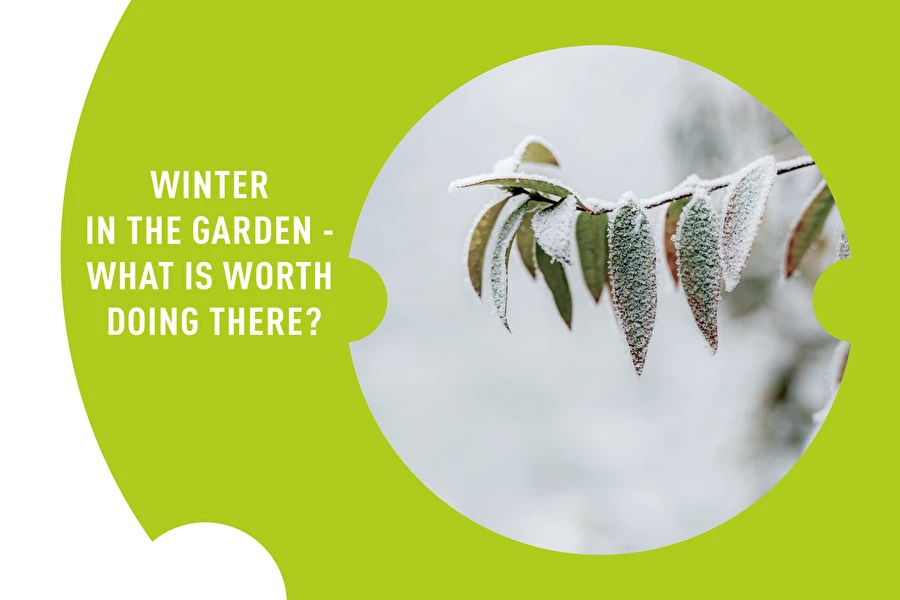Care for the plants under covers.
As we have already mentioned, a high temperature stimulates the plants to grow and bloom
– and that impact may be further enhanced by various covers and screens that we used to
secure the trees and shrubs for the winter. When the freeze comes, covering plants is
definitely recommended. However, once the thermometers start showing positive values for
a longer while, it is worth checking on the plants, to make sure their conditions are not too
stuffy, too warm, or too humid. A stuffy microclimate under the covers may lead to the plants
being attack by moulds or fungi that thrive in such environment. This, in turn, is a straight
way for the plants to catch diseases. Thus, your permanent tasks include watching the
weather and listening to forecasts. This will help you adjust the degree of plant coverage –
you will be able to reduce the cover on time during warmer times or increase it once the
frosty days come.
Check whether the plants have access to water.
A dry and warm January, without rain or snow, or severe frost that causes water to freeze
within the soil may cause physiological drought. Plants that are deprived of water, even while
they are having the “winter sleep”, may be unable to make up for these deficiencies on their
own and thus not survive until spring, unfortunately. Physiological drought stems also from
high salinity of the soil, resulting e.g. from using salt or mixtures of sand and salt as a means
of handling icy pavement. Thus, it is worth remembering to water plants not only on the hot
summer days, but also in winter and early spring whenever the temperature is above zero.
Remove excess snow from trees, shrubs, and other plants.
If January is frosty and snowy, take care of your plants by removing excess snow capping
from their branches and leaves. However, if the snow does not fall and the temperature
remains above zero for a longer while, you may start trimming your hedges. A warm end of a
month is also a good time for trimming fruit shrubs.
Monitor your bulb flowers.
If you have any bulb flowers in your garden – which tend to show the signs of the coming
spring – you should definitely pay attention to them. If the winter is warm, they might start
sprouting and blooming already in January. Although bulb plants may, in general, survive
through a few days of freezing, it is worth providing them with additional protection once the
temperature falls below -5⁰C for a bit longer, at least in the form of bedding.
Take care of fruit trees.
It is worth wrapping the young trunks of fruit trees with straw or a special gardening cover on
cooler days. In January, we may also whiten the tree trunks with lime, which will prevent the
bark from cracking due to temperature fluctuations. If you notice any such cracks caused by
frost, try spreading special preparations on them that will “allow the wounds to heal” and
protect your trees against infections.
Remember about the lawn.
At the beginning of the year, do not start cutting any grass, in spite of its growth. If you do,
this will stimulate more blades to grow, and a sudden decrease in temperature and frost may
weaken them significantly. At that point, the only thing you could do is make sure that your
garden is tidy. If you have not done this already, remove from the lawn any dead leaves,
shrub twigs, and branches knocked down by the wind. Also remember not to walk on the
lawn after the snow falls – the grass frozen under the snow is easy to damage, which may
lead to its poor condition in early spring.
Look after the plants wintering indoors.
If some pot plants were taken to the basement or another warmer place for the winter, it is
worth checking on them regularly and watering them if necessary. If you long for your
vegetable beds that are now buried under snow, do not forget that also in winter you can
enjoy freshly cultivated sprouts, which are an excellent source of vitamins. A home sprouter
will help you with that.
Remember to feed the birds.
On cold winter days when we are visited by frost and snow, do not forget about our feathered
friends who have a hard time finding food in the winter landscape.
...because green is beautiful!






 Cheese calculator
Cheese calculator



 Winemaking
Winemaking










